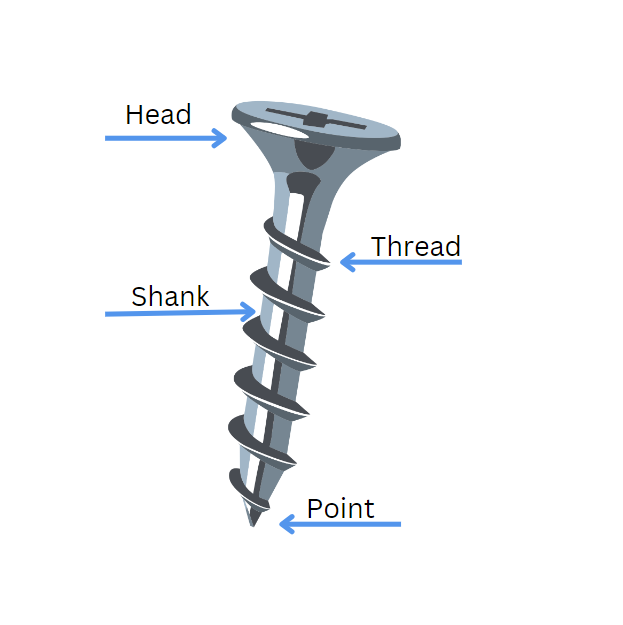A tradesman guide to screws
Posted by Lawrie Fraser on 9th January 2024
Quick Summary
Screws serve as essential fasteners, primarily used to join materials or objects together. They work by converting rotational force into a linear one, driven by the screw's spiral thread. Choosing the right screw involves considering factors like material thickness, density, and load-bearing capacity. Various screw types, head and drive styles cater to diverse applications, ensuring optimal performance and durability. Safety precautions are vital when working with screws, including using protective gear. Understanding screw types and their specific applications allows for efficient and effective fastening in various projects.
Function and Mechanism of Screws
Screws serve as indispensable components for fastening multiple materials or objects together. They are pivotal in various applications such as joining wood pieces, affixing plasterboard to wooden battens, securing fixtures like pictures or curtain poles, and attaching hinges to doors. These versatile fasteners find use in both DIY projects and professional endeavors.
Operational Principle of Screws
The functionality of screws revolves around their ability to bind materials together. By utilizing a screwdriver or compatible drill, the rotational force applied to the screw's head initiates a linear force. This force, coupled with the spiral thread, drives the screw into the material, ensuring a secure hold.
Choosing the Right Screw Type
Screws consist of essential components: the head, shank, thread, and point. They vary in materials, sizes, head types, drive types, and thread designs, catering to diverse applications. Optimal screw selection relies on factors such as material thickness, density, load-bearing capacity, and minimizing the risk of material damage.

Drive and Head Types
Diverse screw head drive types like slotted, Phillips, PZ (pozidriv), Torx (T or TX), spider drive, and square heads offer varied torque and compatibility with screwdrivers/drill bits. The head types, including countersunk, double self-countersunk, flat, rounded, and small screw heads, cater to specific finishing and material requirements.
Understanding Screw Gauges
Screw gauge, denoting the shank diameter, spans a range from 1 to 20 in the imperial system. The higher the gauge number, the larger the screw. Each gauge size corresponds to specific metric sizes, and the table provides clearance and pilot hole measurements for different gauge sizes.
Types of Screws for Various Applications
The array of screws available encompasses woodscrews, decking screws, timber screws, drywall screws, stainless steel screws, roofing screws, self-tapping and drilling screws, masonry screws, and Electrical Screws. Each type is tailored to suit different materials and applications, ensuring optimal performance and durability.
Safety Precautions and Key Considerations
Working with screws demands attention to safety, including the use of protective gear like goggles, gloves, and dust masks. Essential considerations before purchasing screws involve evaluating the quantity needed, determining if existing screws require removal, understanding the project requirements, and ensuring compatibility with the material for a secure and lasting hold.
By comprehensively understanding screw types, their applications, and choosing the right one based on specific project needs, individuals can ensure effective fastening and optimal outcomes across various endeavors.
